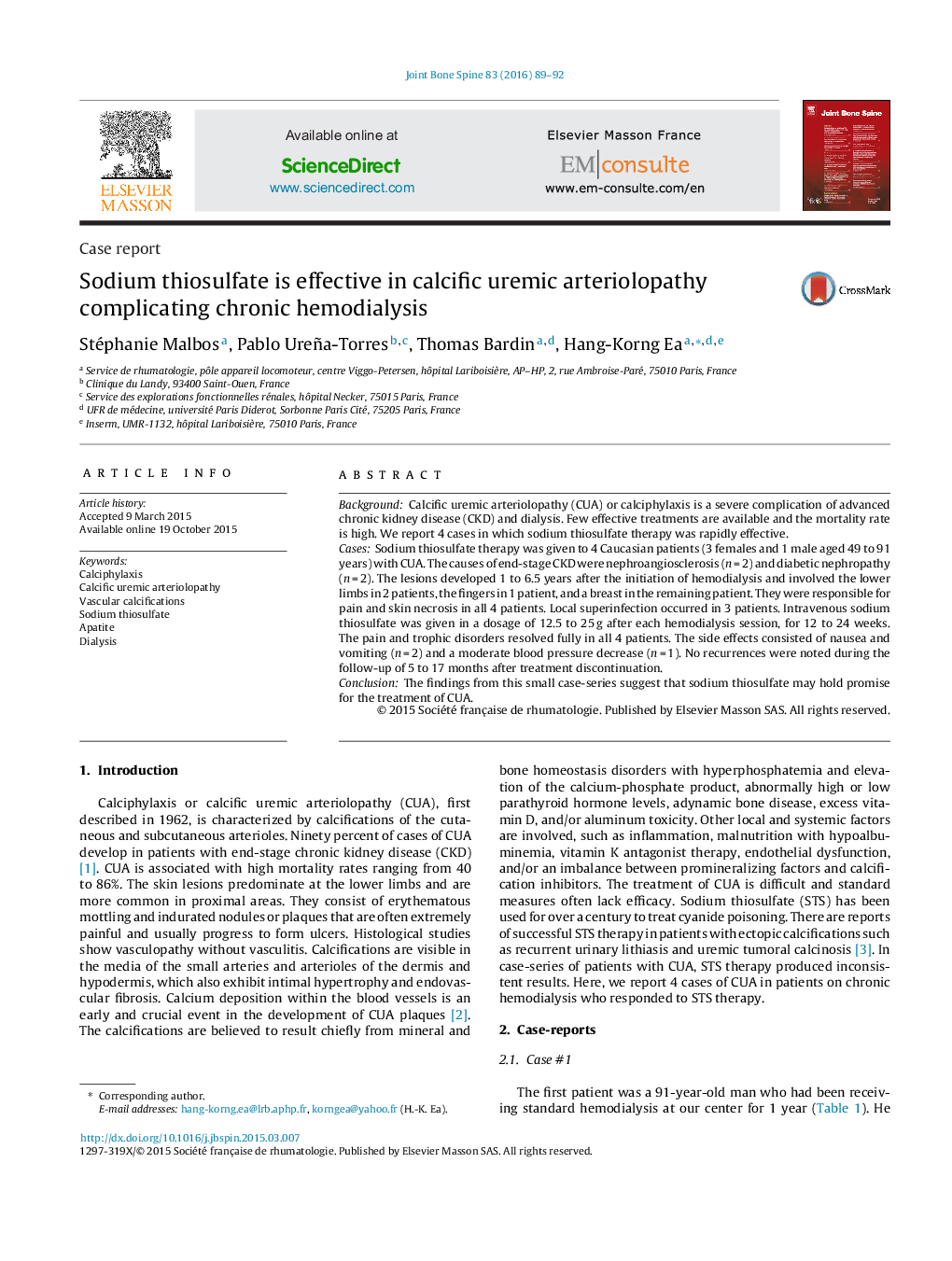| Article ID | Journal | Published Year | Pages | File Type |
|---|---|---|---|---|
| 3365528 | Joint Bone Spine | 2016 | 4 Pages |
BackgroundCalcific uremic arteriolopathy (CUA) or calciphylaxis is a severe complication of advanced chronic kidney disease (CKD) and dialysis. Few effective treatments are available and the mortality rate is high. We report 4 cases in which sodium thiosulfate therapy was rapidly effective.CasesSodium thiosulfate therapy was given to 4 Caucasian patients (3 females and 1 male aged 49 to 91 years) with CUA. The causes of end-stage CKD were nephroangiosclerosis (n = 2) and diabetic nephropathy (n = 2). The lesions developed 1 to 6.5 years after the initiation of hemodialysis and involved the lower limbs in 2 patients, the fingers in 1 patient, and a breast in the remaining patient. They were responsible for pain and skin necrosis in all 4 patients. Local superinfection occurred in 3 patients. Intravenous sodium thiosulfate was given in a dosage of 12.5 to 25 g after each hemodialysis session, for 12 to 24 weeks. The pain and trophic disorders resolved fully in all 4 patients. The side effects consisted of nausea and vomiting (n = 2) and a moderate blood pressure decrease (n = 1). No recurrences were noted during the follow-up of 5 to 17 months after treatment discontinuation.ConclusionThe findings from this small case-series suggest that sodium thiosulfate may hold promise for the treatment of CUA.
